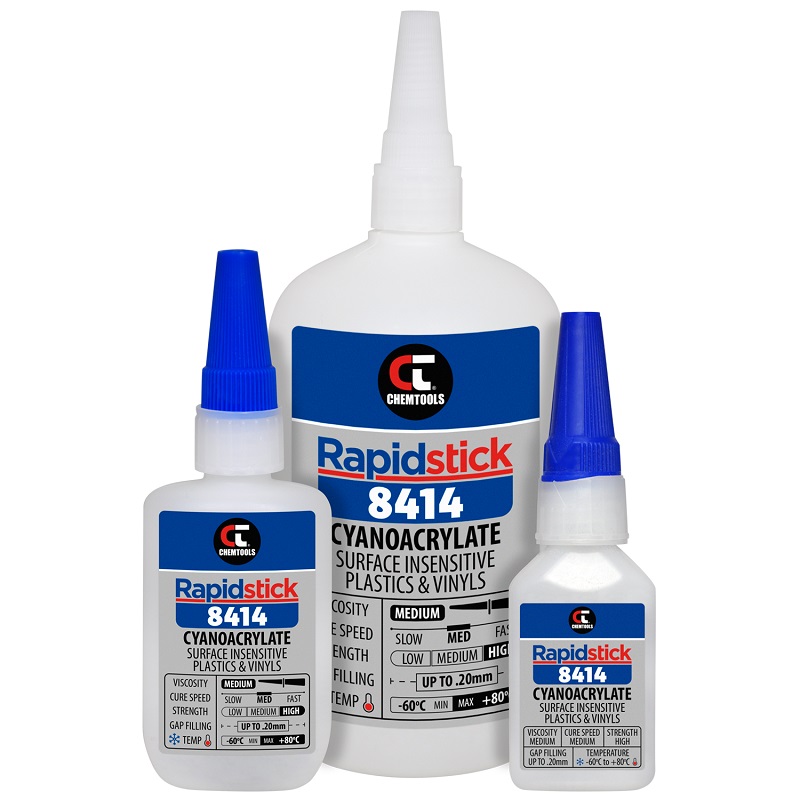
|
Industrial & Automotive Parts |
|---|
Adhesives play a major role in joining machinery and vehicle components, maintaining system efficiency, while also reducing potential damage. However, there are many different types of adhesives for various functions, so it’s important to select the right one for your needs. To do this, you need to consider the many variables in your applications and find an adhesive that reflects the necessary characteristics.
Industrial & Automotive Parts specialise in supplying our clients across Australia with various components, including instant adhesives. In this article, we explain what instant adhesives are and provide parameters to help in selecting the right adhesive for your needs.

Instant adhesive is a type of compound that cures rapidly and secures components before they can move and displace, breaking the bond. They're commonly known as superglues, but you may also find their technical name as cyanoacrylate adhesives. Due to their rapid bonding, they’re a highly convenient resource for many applications that need to be secured in place, fast, and when downtime is expensive. They’re great at joining nearly all substrates, but excel at small to medium-sized components.
With a large variety of instant adhesives available, selecting the right one can take some deliberation. Here we explore certain parameters to consider:
The substrates to be cured together is one of the most important influences on selecting the right adhesive, as some adhesives are only designed to bond specific types of materials together, such as wood, plastic or metal. As automotive and industrial applications typically revolve around various forms of metal machinery, the substrates often require an instant adhesive suitable for metal bonding. ‘Metal’, however, is a fairly generic term, so it is important to find the appropriate option for the substance you have in mind, whether it be iron, steel, aluminium, or copper.
Machinery may require flexibility for bending loads, high-temperature operations, impact and shock resistance, high vibration control, or even a combination of the above. Instant adhesives are also designed to suit different applications and performance characteristics. Understanding the role your components play in the wider system is therefore important in selecting the right adhesive types.
For example, do you need the adhesive to create a structural bond? Then you will need to know the composition of the substrates to determine the best right adhesive to form the appropriate bond.
Will there be a high degree of stress placed on the bond once the wider machinery is in use? Consider options that have a strong balance of tensile and shear strength. You can also consider whether there are torsion or compressive forces on the components, in which case, a more flexible adhesive should be used.
What is the frequency of that stress? Certain adhesives will only withstand extreme stress for a limited period, or prove unable to tolerate the type of stress, such as autoclaving.
What are the temperature requirements? An adhesive with a low-temperature cure is unlikely to tolerate high ambient temperatures, but it is important to remember that many materials that operate well in the heat can break down and crack should low temperatures cycle in.
The position of the joint is something that is often neglected, yet in some cases, it can inhibit the adhesive from curing. Gel adhesive products are well-sited to bonding parts overhead or vertical where they can stay in position as it cures. In these locations, gravity has too much of an effect on liquid adhesives, causing them to drip away from the gap. If appearance is important, like on visible surfaces, low bloom and odour instant adhesives are common choices as they maintain an appealing cosmetic appearance.
Substances generally need to be cleared and prepared for bonding before adhesives can be applied properly. Depending on the parts, they may need physically cleaning or a more advanced chemical treatment, such as abrasion, chemical etch or plasma treatment.
The size of the gap to be bonded or sealed by instant adhesive translates to different viscosity suitability in the product. Low viscosity adhesives are well-suited to general-purpose bonds and small sizes as the liquid can enter the space easily and bond securely. For larger gaps, a more viscous adhesive is required so they can remain in place while the glue is curing without dripping away.
Instant adhesives come as either thermal cure or UV cure types. UV cure compounds bond quickly, but they must be exposed to light, so your substrates will have to allow the exposure of UV light and not be trapped under other components. Thermal cure adhesives can come in different types; some cure at room temperature and others at high heat. If your substrates will be damaged under heat, ensure you use a room temperature thermal cure or UV cure product.
Identify the life duration required for the bonded joint as adhesives can deliver a range of working life spans, where this time is often directly correlated to curing time for thermal cure adhesives. For machinery and vehicles that are difficult to disassemble or have expensive downtime, you likely need a long working life, which means it might take longer to cure when at room temperature. UV cure products don’t have the same variance in working life.
The final key factor to determine the right instant adhesive is to assess how much stress the joint is put under to identify the right strength of the product.
For more information on selecting the right adhesive for your applications, please contact us at Industrial & Automotive Parts today.